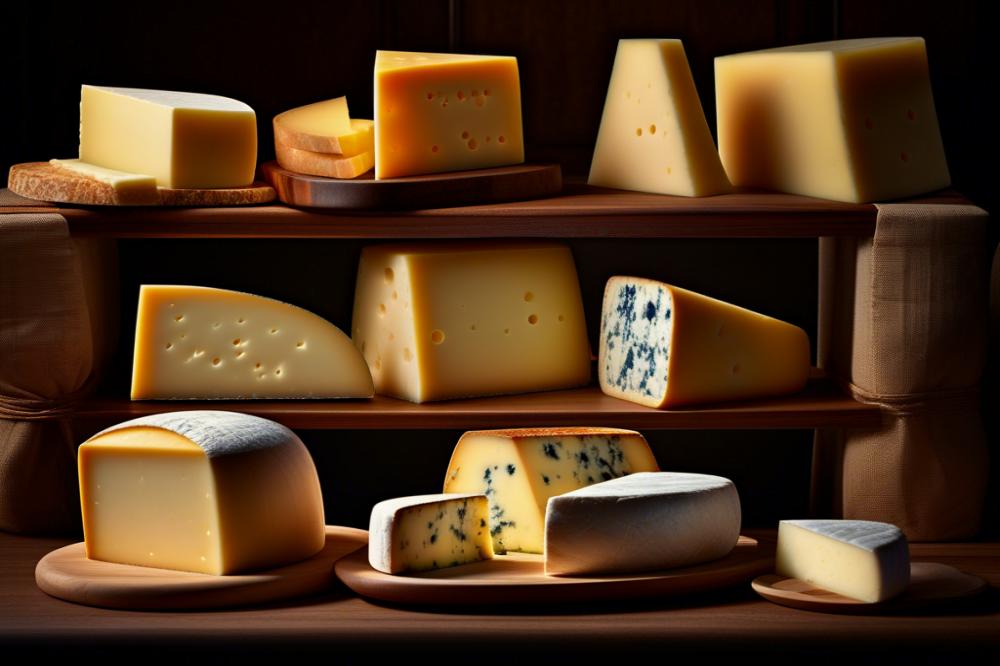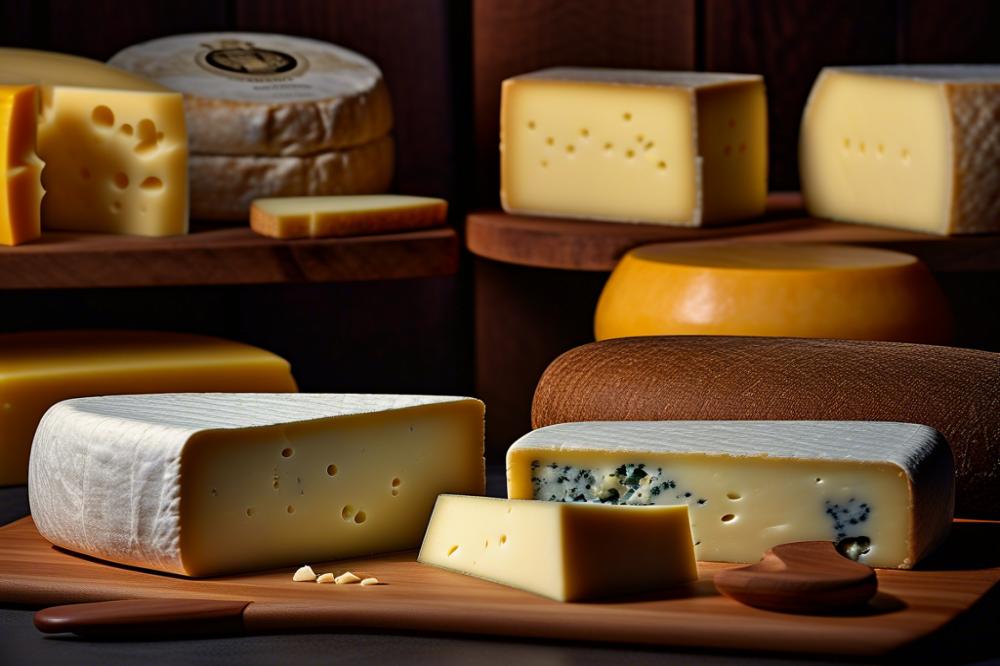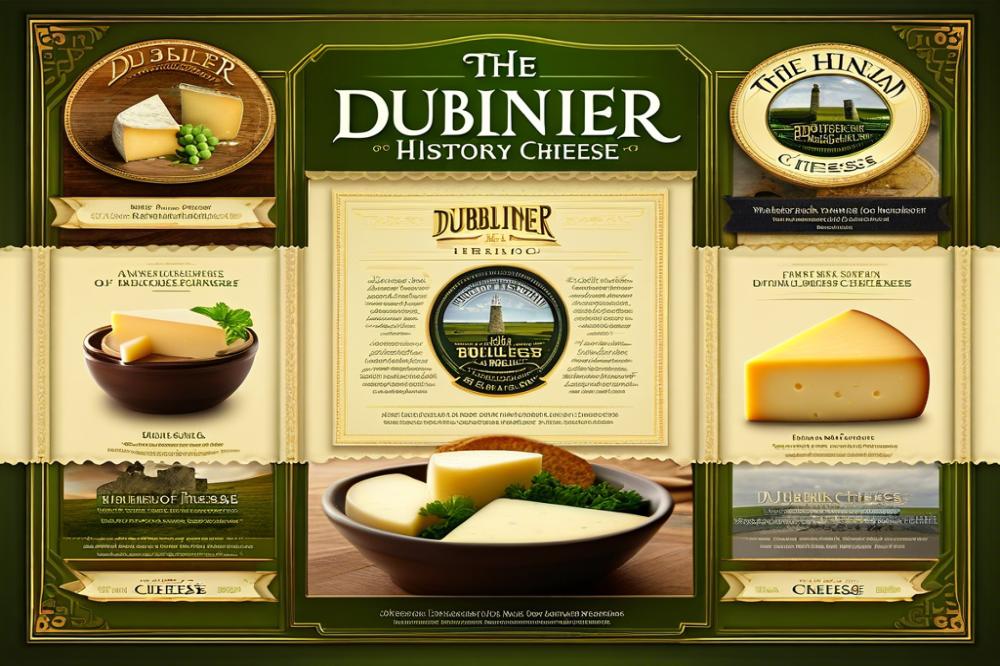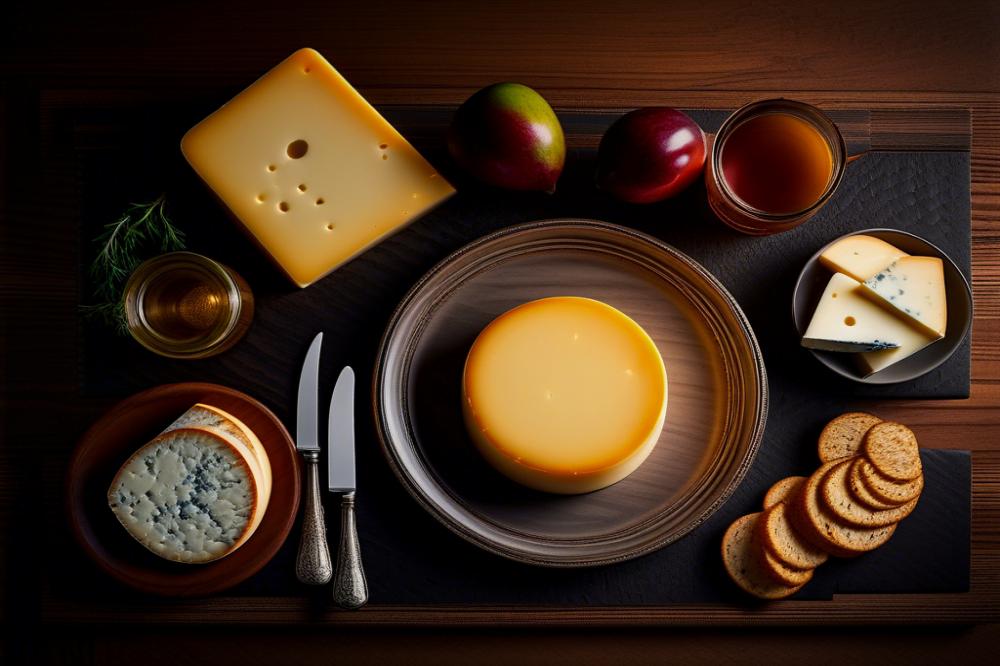history and heritage of Dubliner Cheese
Dubliner Cheese represents a vibrant piece of Ireland’s rich culinary heritage. This beloved cheese is more than just a food item; it embodies a part of Irish culture. Originating in the late 20th century, it was first crafted by the Sheridans and beyond its history lies an interesting evolution. Aged for several months, the cheese features a hard texture with a hint of sweetness and nutty undertones. Its flavors appeal to many, making it a favorite in households across Ireland.
The cultural significance of this cheese can be seen in its role at family gatherings, festive celebrations, and everyday meals. It pairs wonderfully with various foods, from artisan breads to fruits. This versatility enhances its appeal, making it a staple in Irish cuisine. As global interest in Irish Cheese has surged, Dubliner Cheese has gained recognition beyond its homeland. International cheese lovers are discovering its delightful taste, leading to a growing demand.
Across the world, the charm of Dubliner Cheese is hard to resist. Cheese festivals and food markets frequently highlight it, further cementing its popularity. This growth reflects a larger trend where traditional Irish Cheeses captivate palates globally. Each bite brings a touch of Ireland, allowing people everywhere to connect with its heritage. With its distinct flavor profile and rich history, this cheese continues to thrive as a beloved symbol of Irish culture.
The History and Heritage of Dubliner Cheese

Originating in Ireland, Dubliner Cheese has a rich story. Its development is deeply rooted in the island’s cheese-making traditions. The unique landscape of Ireland plays a significant role in this journey. Grass-fed cows thrive in the lush pastures, providing exceptional milk. This vital ingredient shapes the flavor and texture of the cheese.
Historical events have influenced the production processes as well. Over the centuries, local farmers adapted to changing needs. During the late 20th century, a revival in artisanal cheese-making took place. More producers began focusing on quality and tradition, which fueled Dubliner’s growth. As a result, a blend of ancient techniques and modern practices emerged.
Recognition for the cheese came not long after its introduction. Various awards highlighted its quality and taste. In 1997, it earned its first significant accolade at the British Cheese Awards. This achievement marked a turning point for the product. With consistent quality, it garnered more fans worldwide.
Further accolades followed, solidifying its reputation. Through dedicated work, producers expanded the market beyond Ireland. The cheese gained popularity in markets like the U.S. and Europe. People appreciated its firm texture and nutty flavor. It soon became a staple in many kitchens.
Combined influences from local farming and historical events make Dubliner Cheese special. This heritage is a source of pride for producers. Its growing recognition reflects a wider appreciation for Irish food culture. Dubliner stands as a testament to craftsmanship in every bite.
Irish Cheese

Irish cheese is gaining recognition beyond its borders. Different varieties showcase the rich flavors and textures of this region. Alongside the well-known Dubliner, cheeses such as Cashel Blue, a creamy blue cheese, and Cooleeney, a soft, washed-rind cheese, also deserve attention. Each type reflects the specific traditions of its area.
Regional ingredients play a significant role in shaping Irish cheeses. Farmers often use milk from local cows, sheep, or goats. This variety in milk sources influences the taste and quality of the cheese. Traditional practices are equally important. Many cheesemakers follow age-old recipes passed down through generations. They combine these time-honored methods with modern techniques to create new flavors.
Irish farmers and cheesemakers are vital to the cheese industry today. These individuals work hard to produce high-quality products. They take pride in using sustainable practices that respect the land and animals. This commitment to the environment guarantees the freshest ingredients. Many cheesemakers focus on small-batch production, allowing for greater attention to detail.
The diversity of Irish cheese reflects the country’s rich agricultural heritage. Each region boasts its specialties, influenced by the local climate and terrain. Cheesemakers often collaborate with local farmers to promote sustainable farming. These partnerships benefit both the producers and the environment. As a result, consumers enjoy a wide range of delicious cheeses, each with its own story.
As awareness of Irish cheese increases, so does interest in its unique qualities. Visitors to Ireland often seek out local cheese shops to sample artisanal creations. Tastings provide an opportunity to discover flavors that tell the story of the land and its people. Many cheese festivals now celebrate this vibrant industry. They bring together producers and consumers in a festive atmosphere, fostering a greater appreciation for Irish dairy.
Recipe: Dubliner Cheese and Potato Gratin

This classic potato gratin is a wonderful way to highlight the rich flavors of Dubliner cheese. It combines creamy potatoes with a delightful cheesy crust, making it a perfect side dish for any meal. Here’s how to make it.
Ingredients:
- 500g potatoes, thinly sliced
- 200g Dubliner cheese, grated
- 200ml cream
- 1 garlic clove, minced
- Salt and pepper to taste
- Fresh thyme (optional)
Instructions:
- Preheat your oven to 180°C (350°F).
- Layer half of the sliced potatoes in a greased baking dish.
- Sprinkle half of the grated cheese along with some minced garlic over the potatoes.
- Season with salt, pepper, and thyme if you like.
- Repeat with the remaining potatoes, cheese, and garlic.
- Pour the cream over the top layer.
- Bake for 45-50 minutes until golden and bubbly.
- Allow to cool slightly before serving.
Nutritional Information:
Here are some approximate values per serving: calories, fat content, protein, and carbohydrates. This dish is hearty and satisfying.
Health Benefits of Dubliner Cheese
This cheese offers several health benefits. It is a good source of protein, which is important for muscle growth and repair. Calcium is also present in high amounts, promoting strong bones and teeth.
Additionally, some varieties of cheese contain probiotics. These beneficial bacteria can support gut health. Including Dubliner cheese in your diet can be a tasty way to get these nutrients.
Embracing Tradition and Flavor
Dubliner Cheese plays an important role in Irish culture and its diverse array of cheeses. Its rich history reflects the craftsmanship of local cheese makers who pour their heart into every batch. This cheese stands as a symbol of heritage, celebrating the traditions of the Irish countryside.
Many cooks in homes or restaurants can enhance their dishes using this cheese. While a simple meal may seem complete, the addition of Dubliner can elevate flavors and textures. Whether it is melted in a dish or served on a cheese board, it adds a personal touch that resonates with the pride of Irish culinary arts.
Support for local agriculture is essential. Choosing regional products like this cheese helps sustain farms and the people behind them. By purchasing Irish cheese, consumers are not just enjoying a delicious treat but also playing a part in preserving a vital culinary tradition.
In exploring the varieties available, individuals will find numerous ways to incorporate cheese into their cooking. Each bite can tell a story, creating a deeper appreciation for what goes into making such a remarkable product. Taste the history and enjoy the heritage that comes from a simple block of cheese.



